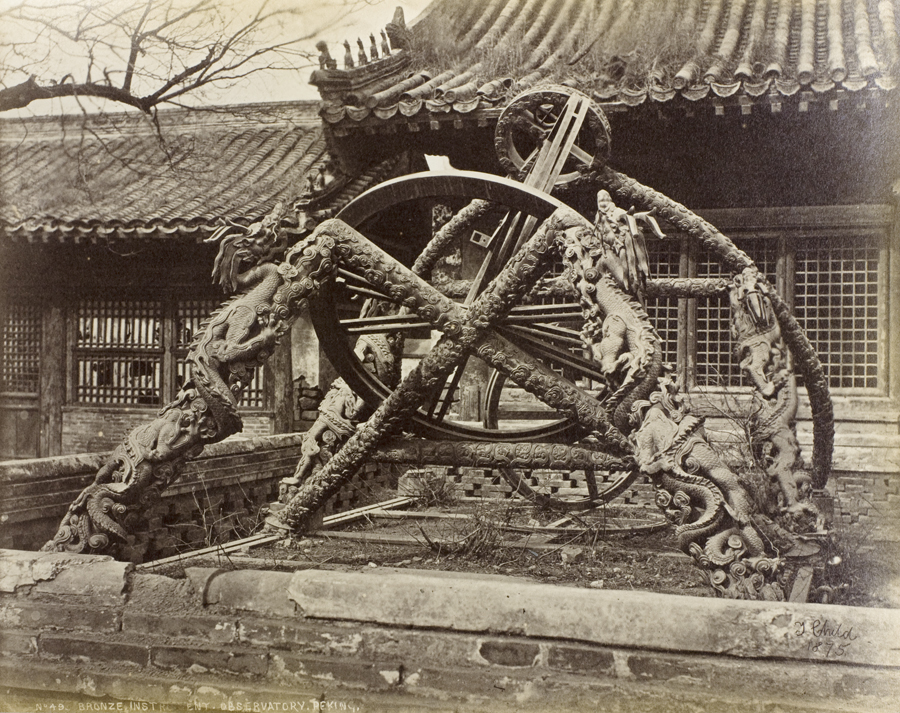To mark the vernal equinox on Tuesday 20th March, this is a photograph by Thomas Child (1841-1898) of part of the Ancient (Imperial) Observatory in Peking (Beijing). The equinox (a word from Latin, meaning ‘equal night’) heralds the start of spring in the northern hemisphere, long celebrated as a time of rebirth. As the Emperor of China was considered the Son of Heaven, astronomy and the movements of celestial bodies were of great interest. The Imperial Observatory is one of the oldest in the world, dating from 1442, and was built on a part of the city walls that still stand. In the seventeenth century, the Jesuit Ferdinand Verbiest redesigned some of the instruments. After the Boxer Uprising, the instruments were taken as ‘war-booty’, half to Berlin and half to Paris, to be returned towards the end of the First World War. The observatory is now a museum.
Thomas Child (1841-1898) was a British photographer, employed from 1870 to 1889 in Peking (Beijing) as a gas engineer for the Imperial Maritime Customs Service. His photographs of the city taken around 1875-80 “became, in China and abroad, ‘the’ visual reference on the old imperial capital. The images found their way into private albums and publications well into the 20th century and inspired generations of photographers.” (source: Régine Thiriez: ‘Barbarian Lens’)

